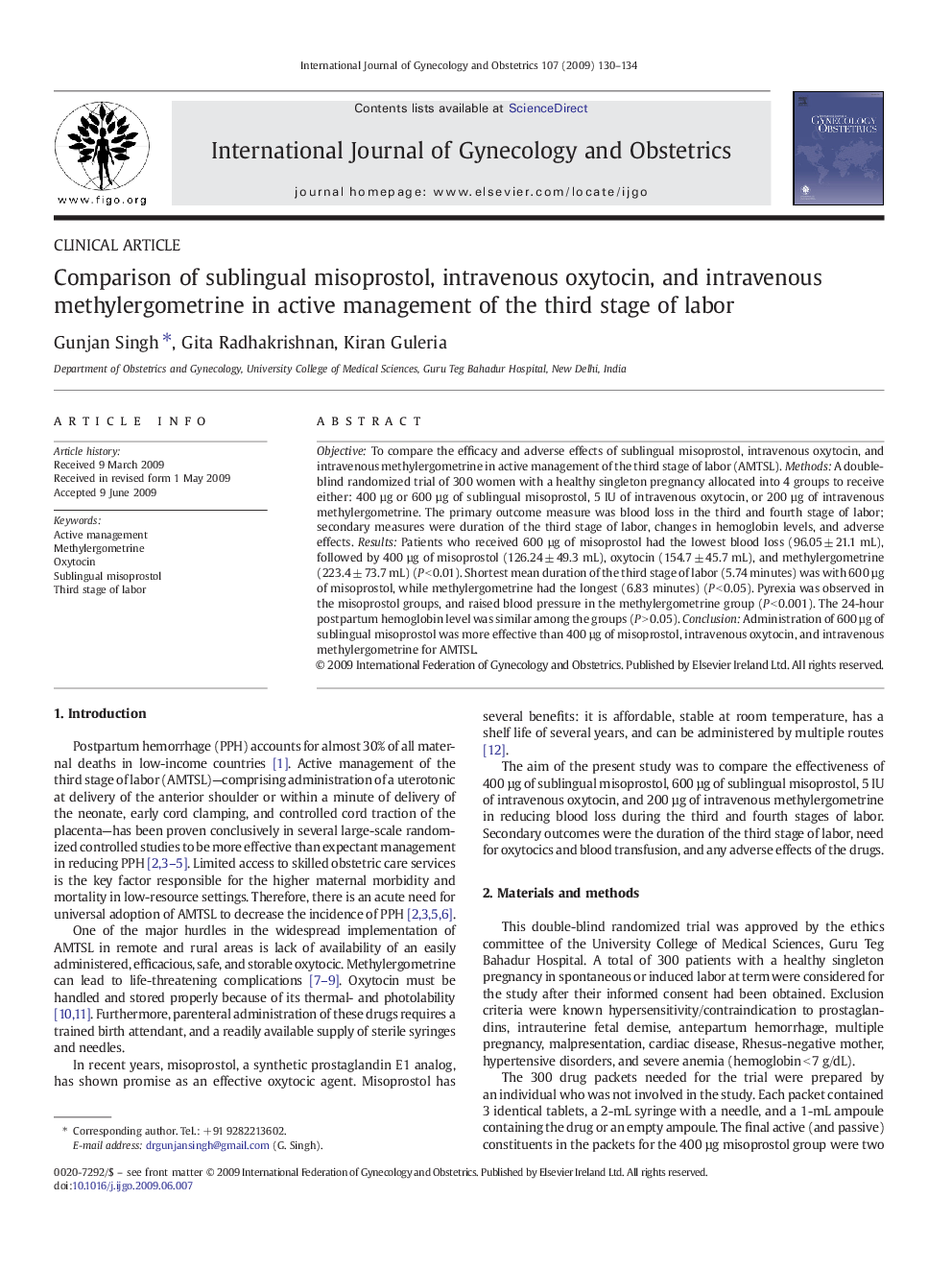| Article ID | Journal | Published Year | Pages | File Type |
|---|---|---|---|---|
| 3954669 | International Journal of Gynecology & Obstetrics | 2009 | 5 Pages |
ObjectiveTo compare the efficacy and adverse effects of sublingual misoprostol, intravenous oxytocin, and intravenous methylergometrine in active management of the third stage of labor (AMTSL).MethodsA double-blind randomized trial of 300 women with a healthy singleton pregnancy allocated into 4 groups to receive either: 400 µg or 600 µg of sublingual misoprostol, 5 IU of intravenous oxytocin, or 200 µg of intravenous methylergometrine. The primary outcome measure was blood loss in the third and fourth stage of labor; secondary measures were duration of the third stage of labor, changes in hemoglobin levels, and adverse effects.ResultsPatients who received 600 µg of misoprostol had the lowest blood loss (96.05 ± 21.1 mL), followed by 400 µg of misoprostol (126.24 ± 49.3 mL), oxytocin (154.7 ± 45.7 mL), and methylergometrine (223.4 ± 73.7 mL) (P < 0.01). Shortest mean duration of the third stage of labor (5.74 minutes) was with 600 µg of misoprostol, while methylergometrine had the longest (6.83 minutes) (P < 0.05). Pyrexia was observed in the misoprostol groups, and raised blood pressure in the methylergometrine group (P < 0.001). The 24-hour postpartum hemoglobin level was similar among the groups (P > 0.05).ConclusionAdministration of 600 µg of sublingual misoprostol was more effective than 400 µg of misoprostol, intravenous oxytocin, and intravenous methylergometrine for AMTSL.
